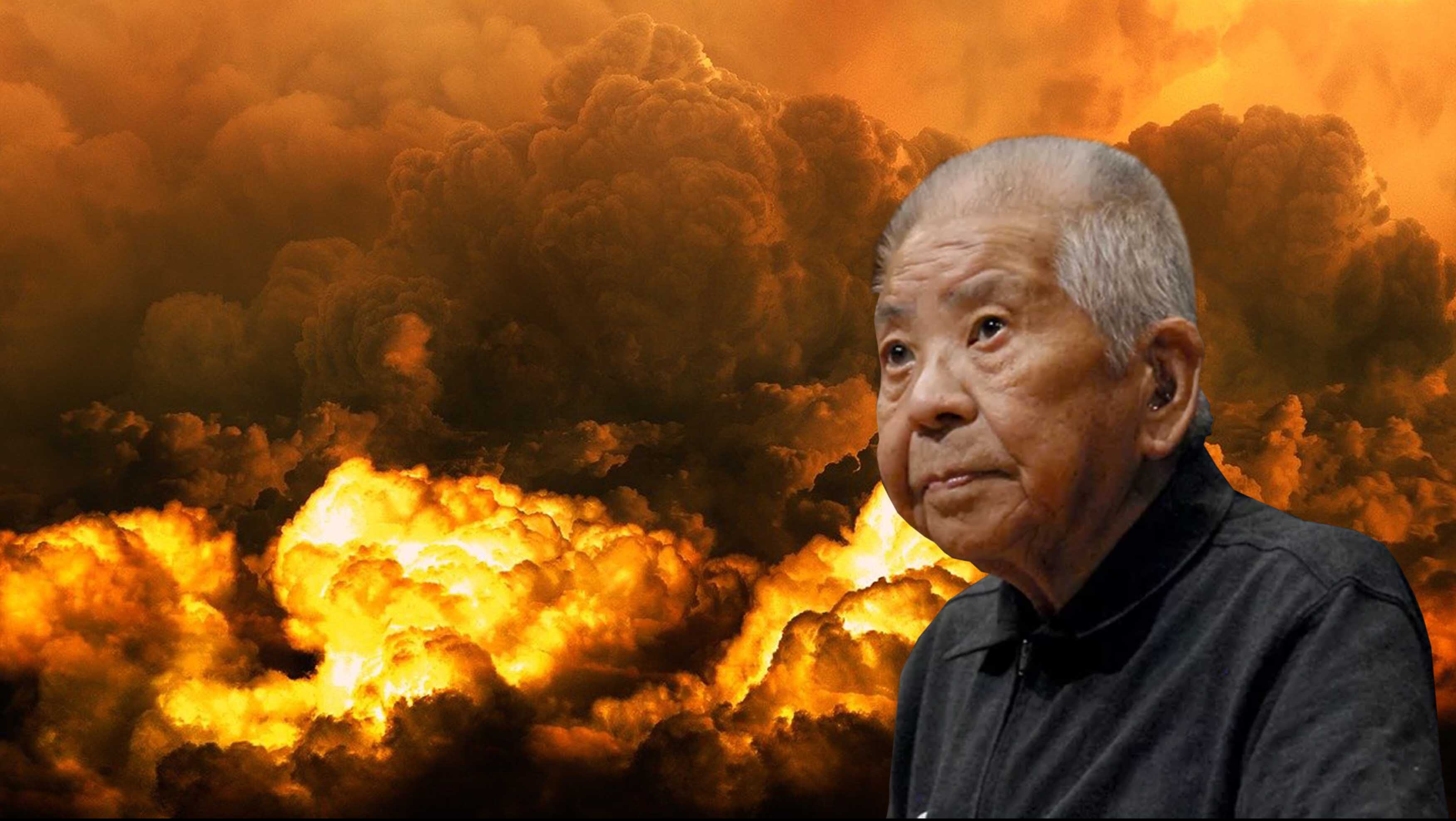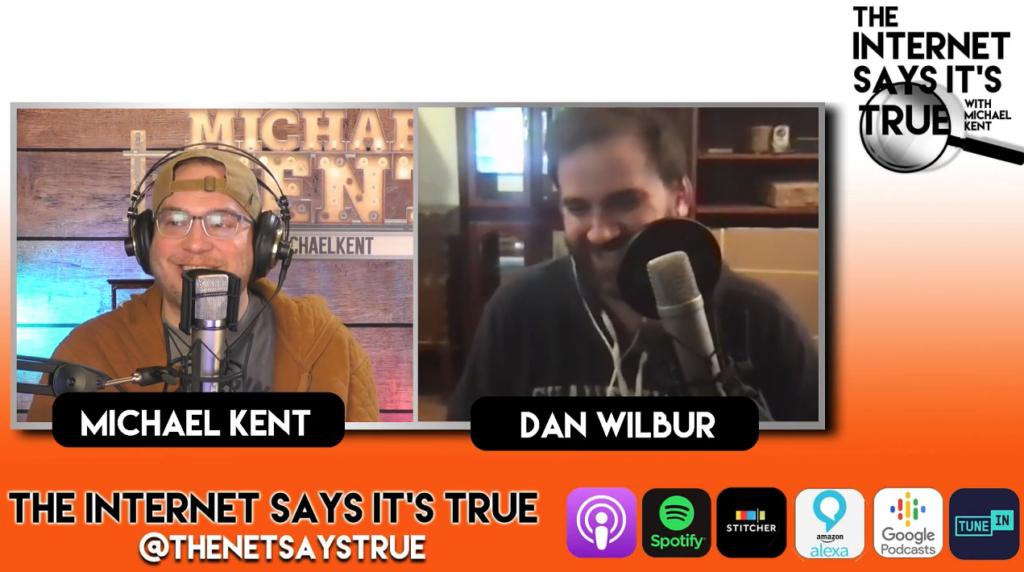The Man Who Survived BOTH Atomic Bombs in Japan: Tsutomu Yamaguchi
Tsutomu Yamaguchi was one of the only people to survive both the atomic bombings of Hiroshima and Nagasaki in 1945. He was the only one officially recognized as a double survivor by the Japanese government. In this episode, we tell his remarkable tale of survival. Then we chat with comedian Dan Wilbur.

When President Obama said those words in May of 2016 at the Hiroshima Peace Memorial Park, it was historic because he was the first sitting U.S. President to visit Hiroshima. Of course, he was criticized by many on the right. They called it part of his “apology tour.”
By the summer of 1945, war in Europe was over. Germany had surrendered in May, Hitler was dead and troops were coming home. But in the Pacific, war raged on into its fourth year. Of the 1.25 million total American battle casualties in World War II, almost 1 million of them had occurred just in that last year. By 1945, the Allies were winning in the Pacific, but it was coming at a huge cost. American forces were bombing mainland Japan, but had a plan to invade in October. It was estimated that an American invasion would result in up to 10 million Japanese deaths and 4 million American deaths. The firebombing of Tokyo and other Japanese cities was killing tens of thousands of people. But a special weapon was being developed that could possibly prevent the need for a land invasion.
In July of 1945, the United States detonated the first atomic bomb in what was called the Trinity Test on the Alamogordo test range the deserts of New Mexico. This was the beginning of the nuclear age. And – this part is shocking – it was only three weeks later that this new experimental weapon was detonated above the city of Hiroshima. Three days later came the bombing of Nagasaki. They were the first and – to this day – the last use of any nuclear weapons in war.
For three years leading up to the Trinity Test, the Manhattan Project – a top secret team of scientists worked on developing the weapon. They were racing what they thought was Germany’s effort to also develop nuclear weapons. J. Robert Oppenheimer was the director of the program. He is credited as being “The Father of the Atomic Bomb.”
American military planners chose the targets of Nagasaki and Hiroshima because they were large cities that had been otherwise untouched by the bombing of Japan. Because of this, the effects of the single bomb would be seen by everyone in a sort of psychological warfare that made it clear what this one single weapon could do. At the time, it was argued that these cities also had factories helping the war effort, but at least for Hiroshima, history has proven this largely untrue.
After assessing the damage and confirming that it was indeed a nuclear bomb that had been detonated, the Japanese Navy concluded that they would hold out for future blasts since the amount of these types of rare bombs had to be limited. Since there was no sign of Japan surrendering, American Generals decided to move forward with a second bombing.
Nagasaki was an important port city, with a lot of Japanese industry. But aside from these factories, the bulk of Nagasaki buildings were old-style construction made of wood. Pilot Paul Sweeney commanded the B-29 Bockscar, which would drop a bomb named “Fat Man,” which was a more complex design than the bomb dropped 3 days earlier. It was a similar weight, but provided a larger explosion. Where Little Boy had used 64 kilograms of Enriched Uranium to produce a 15 kiloton blast, Fat Man used 6.4 kilograms of Plutonium to produce a 21 kiloton blast. The Enola Gay was on the mission as well, as a weather recon plane. When the fat man bomb was dropped at 11:02am, at least 40,000 people were killed. Inside the Mitsubishi Headquarters, 6,200 employees were killed. In that plant was a man named Tsutomu Yamaguchi and it was the second time in 3 days that he had personally experienced an atomic bomb. I’ll share more about Yamaguchi after the break.
Tsutomu Yamaguchi dove to the ground and covered his eyes and ears. He had seen the airplane in the air as a silvery speck and two small parachutes dropped from its bomb bay doors. He knew an explosion was coming.
He was 28 year old engineer working for Mitsubishi designing tankers. While he lived in the city of Nagasaki, he had been staying in Hiroshima for 3 months working on this tanker project and had just completed the design of the new ship. He actually had left the Mitsubishi Factory that day and was on his way to the train station when he realized he had forgotten the special stamp he needed for travel, so he returned to the office to get it. He was on his way back to the office when he saw the Enola Gay in the sky. And when the bomb detonated, the world around him was bathed in white light. He was blown into the air and came crashing down, knocking him unconscious. When he came to, his eardrums had been ruptured. He was temporarily blinded and the left side and upper part of his body were badly burned from radiation. His forearms were bright red, having been exposed by his rolled up sleeves. He had only been a mile and a half from ground zero. Yamaguchi took some time to collect himself and regain his eyesight before heading in to the office. It was gone.
He turned around and headed back to his original destination, the train station. But the bridge to the station was gone. He crossed the river on a downed beam after witnessing what he described as a logjam of corpses. He spent the night in a shelter and was surprised to find that trains were still running to depart the city the next day. He crammed on a train to his hometown of Nagasaki. When he got there, he was treated for his burns and bandaged up. Remarkably, he showed up to work at the Mitsubishi plant in Nagasaki, bandaged and still suffering from his burns on August 9th.
He had spent the last 2 days suffering from radiation sickness, anemia, vomiting and internal bleeding. But he showed up for work and told his boss about what he had seen. The following quote from is published in Sam Kean’s book, The Violinist’s Thumb from Bay Back Books and describes that conversation between Tsutomu Yamaguchi and his boss.
“‘You’re an engineer,’ he barked. “Calculate it. How could one bomb…destroy a whole city?” Famous last words. [At that moment] a white light swelled inside the room. Heat prickled Yamaguchi’s skin, and he hit the deck of the ship engineering office. “I thought,” he later recalled, “the mushroom cloud followed me from Hiroshima.”
Tsutomo Yamaguchi had just experienced being underneath his second atomic bomb detonation in 3 days. Luckily, he was uninjured from the second explosion. But as I stated earlier, more than 6,000 deaths occurred at the Mitsubishi plant that day.
Researchers in Japan have estimated that anywhere from 70 to 150 citizens had traveled from one city to another and experienced both bomb blasts. They were called “nijū hibakusha” – or “double eplosion-affected people.” Yamaguchi was the only one to be formally recognized as having lived through both.
Most of the approximately 200,000 people who died from these bombs were killed immediately. Others died days or months or years later. Remarkably, Tsutomo Yamaguchi lived a long life after August of 1945. He and his wife had three children who were born unaffected from the radiation their parents had experienced. However, all three went on to experience various health issues that they blame on their parents’ radiation exposure. Their son died at the age of 58 from cancer. Yamaguchi’s wife died after battling several types of cancer at the age of 88. And while she lived a long life, these cancers were likely the affect of her exposure to radioactive fallout during the bombings in her early life. And Tsutomo – he lived to be 92. He went on to be healthy most of his life, despite permanent hearing loss in one ear. Later in his life, the ailments he faced were results of the extreme levels of radiation he suffered in 1945, including eye problems and acute leukemia.
During his life, Tustomo Yamaguchi wrote several books, including a book of poetry and participated in a documentary about people who had survived the atomic bombs. At the screening of the film, he spoke out against nuclear weapons. He also spoke against the proliferation of nuclear weapons in front of the United Nations in 2006. He said “The reason that I hate the atomic bomb is because of what it does to the dignity of human beings. I can’t understand why the world cannot understand the agony of the nuclear bombs. How can they keep developing these weapons?”
To this day, no American President has apologized for the use of these bombs. Out of the 90 crewmen involved with the two missions, only one, a man named Claude Eatherly, has expressed guilt. In his case, it drove him crazy, causing a life of crime after the war. Paul Tibbets, pilot of the Enola Gay, never expressed remorse.
Another person to express regret was the very man who was the director of the Manhattan Project. J.R. Oppenheimer. And he spent the rest of his life working for nuclear disarmament. In 1965, Oppenheimer was asked on a television show to reflect on his first time seeing that Atomic bomb – at the Trinity Test in the desert:
“We knew the world would not be the same. A few people laughed, a few people cried. Most people were silent. I remembered the line from the Hindu scripture, the Bhagavad-Gita. Vishnu is trying to persuade the Prince that he should do his duty, and, to impress him, takes on his multi-armed form and says, ‘Now I am become Death, the destroyer of worlds.’ I suppose we all thought that, one way or another.”
Review this podcast at https://podcasts.apple.com/us/podcast/the-internet-says-it-s-true/id1530853589
Bonus episodes and content available at http://Patreon.com/MichaelKent
For a special discount at 1WeekTees, SCOTTeVEST, or FATCO skincare, visit http://theinternetsaysitstrue.com/deals

Sources for this episode:
https://en.wikipedia.org/wiki/Tsutomu_Yamaguchi
https://www.npr.org/sections/krulwich/2012/07/17/156915881/if-you-are-hit-by-two-atomic-bombs-should-you-have-kids
https://www.youtube.com/watch?v=9_VsNZl6LGU&t=66s
https://www.columbiatribune.com/story/opinion/columns/2020/08/06/pro-con-should-us-apologize-for-bombing-of-hiroshima-and-nagasaki/42594009/
https://www.nbcnews.com/id/wbna34722073
https://www.youtube.com/watch?v=pXDD-3I3LlI
https://www.youtube.com/watch?v=aHKieI3fPnw
https://www.nytimes.com/2016/05/28/world/asia/hiroshima-obama-visit-shigeaki-mori.html
https://www.snopes.com/fact-check/obama-apology-hiroshima/
https://www.atomicheritage.org/profile/j-robert-oppenheimer
https://en.wikipedia.org/wiki/Atomic_bombings_of_Hiroshima_and_Nagasaki
https://en.wikipedia.org/wiki/J._Robert_Oppenheimer#Los_Alamos
https://en.wikipedia.org/wiki/Trinity_(nuclear_test)
https://www.lawfareblog.com/hiroshima-and-myths-military-targets-and-unconditional-surrender
https://www.history.com/news/the-man-who-survived-two-atomic-bombs

